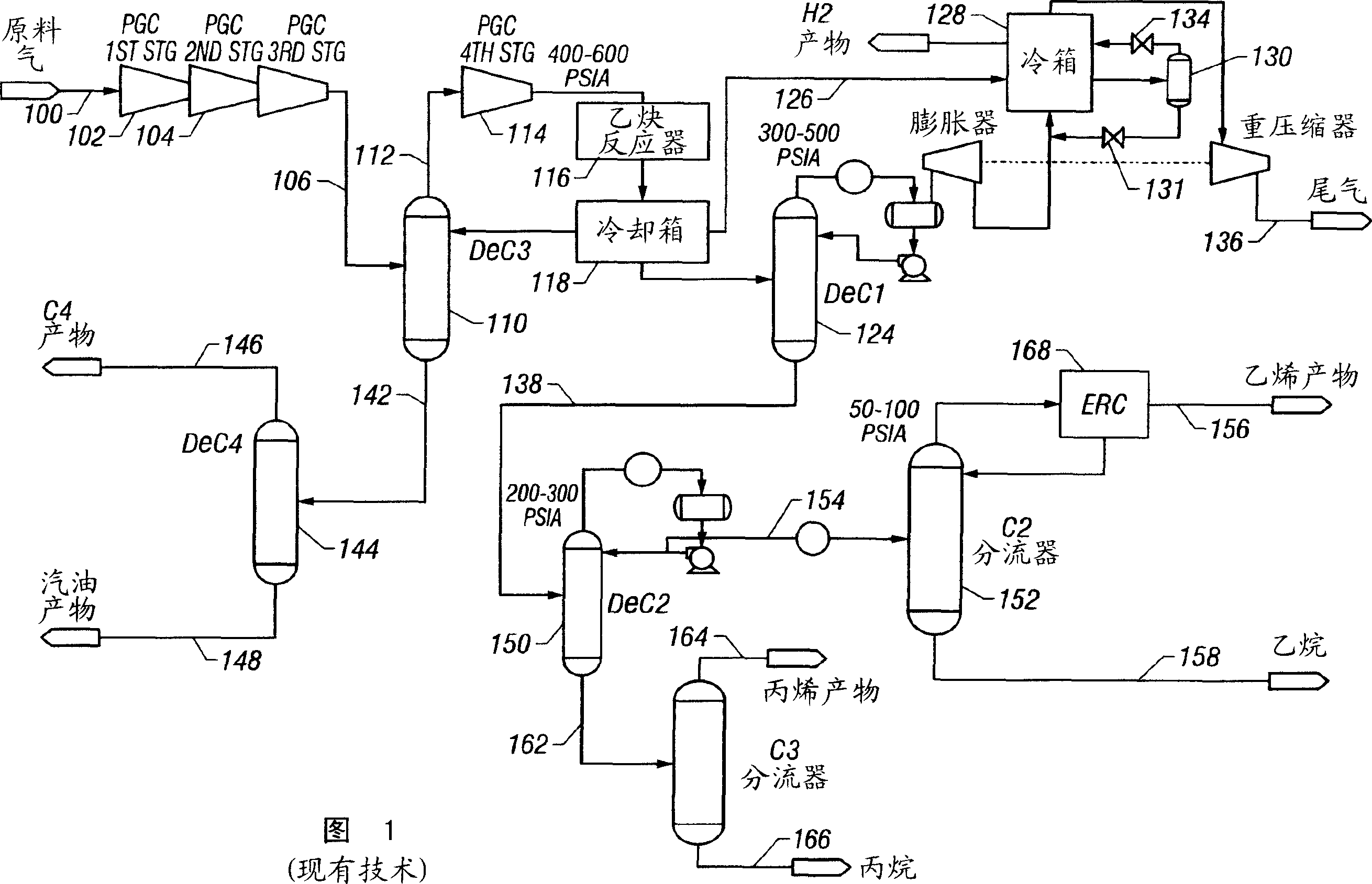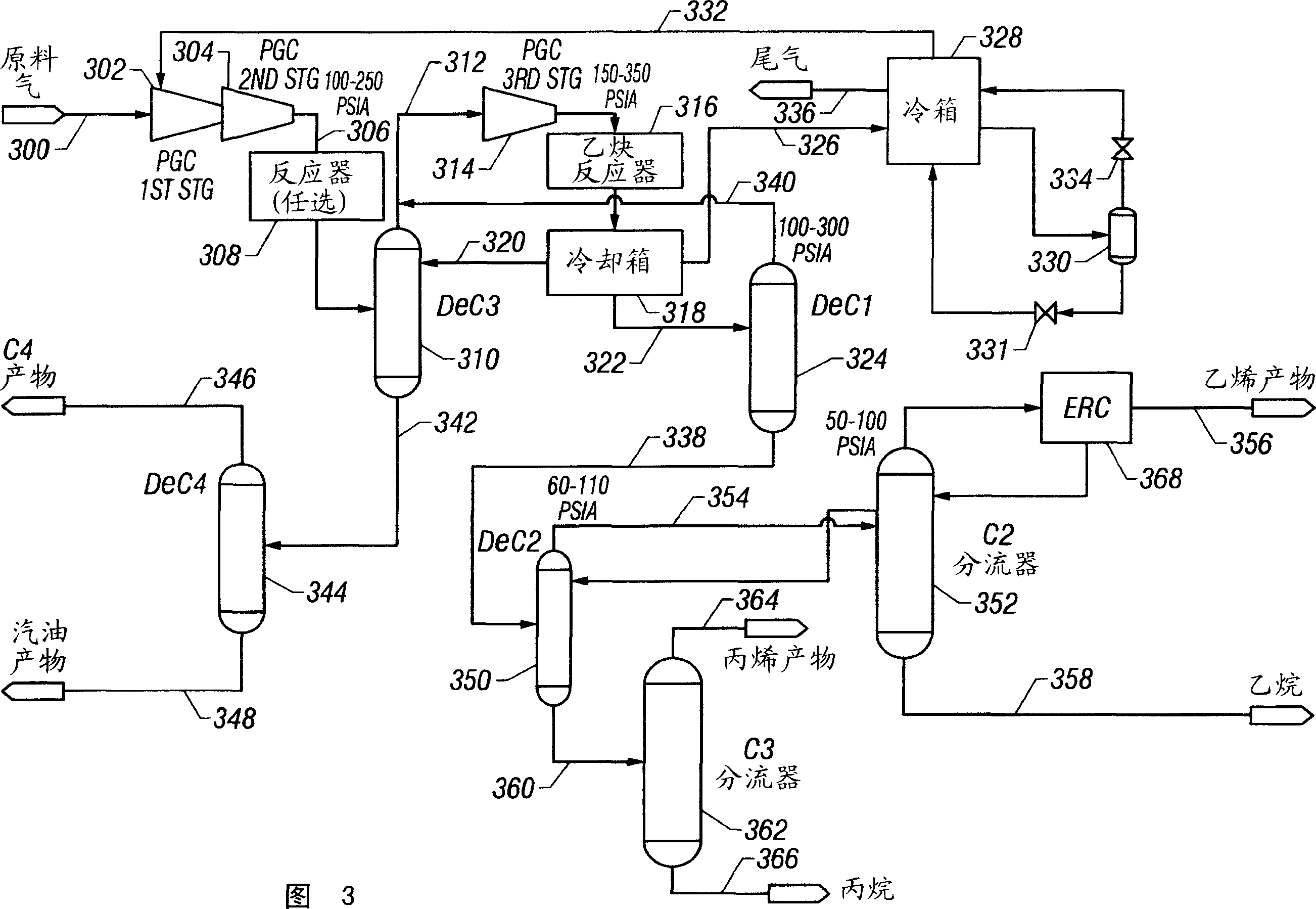Low pressure olefin recovery process
An olefin and ethylene technology, applied in the field of olefin recovery, can solve problems such as explosion and nitrogum instability, and achieve the effects of low capital cost, low energy consumption, and less equipment
- Summary
- Abstract
- Description
- Claims
- Application Information
AI Technical Summary
Problems solved by technology
Method used
Image
Examples
Embodiment 1
[0050] Embodiment 1: adopt such as on commercial Aspen simulator Figure 8A and 8B ("FIG. 8") shows a simulation of the embodiment shown in FIG. 3 with selected pressures (oval icons) and temperatures (hexagonal icons) as indicated. The feedstocks were in the form of gaseous and liquid streams whose compositions are shown in Table 1.
[0051] components
Steam raw material (mol%)
Liquid raw material (mol%)
H 2
6.4
0.0
N 2
0.4
0.0
CO 2
0.1
0.0
h 2 S
0.2
0.0
CH 4
5.8
0.0
C 2 h 4
13.3
0.3
C 2 h 6
2.5
0.1
C 3 h 6
20.1
1.8
C 3 h 8
6.4
0.7
1,3-butadiene
0.1
0.0
1-butene
10.0
3.0
9.2
2.2
n-butane
2.9
1.0
C 5+
17.6
90.6
h 2 o
5.0
0.3
Total...
Embodiment 2
[0054] Embodiment 2: In this embodiment, adopt on commercial Aspen simulator Figure 9A and 9B ("Fig. 9") shows the simulated graph, under the selected pressure (oval icon) and temperature (hexagonal icon), as in Example 1 for Figure 7 The embodiment shown was simulated. The separator bowl 330 is replaced with an absorber 782 . The partially condensed stream withdrawn from cold box 728 is sent to absorber 782 which has only a few trays and no condenser or reboiler so the additional cost compared to separator drum 330 is minimal. The vapor stream 726 exiting the secondary demethanizer feed separator (-70.6°C / -95.1°F drum) is further cooled by cold box 728 to exactly -100°C (-148°F), whereas in Example 1 It is -126°C (-195°F). This partially condensed stream is then sent to the bottom tray in absorber 782 . Ethane liquid stream 784 withdrawn from C2 splitter bottom 758 passes through exchanger 786 in cold box 728 (see Figure 7 ) is cooled to -100°C (-148°F). Mass transf...
PUM
 Login to View More
Login to View More Abstract
Description
Claims
Application Information
 Login to View More
Login to View More - Generate Ideas
- Intellectual Property
- Life Sciences
- Materials
- Tech Scout
- Unparalleled Data Quality
- Higher Quality Content
- 60% Fewer Hallucinations
Browse by: Latest US Patents, China's latest patents, Technical Efficacy Thesaurus, Application Domain, Technology Topic, Popular Technical Reports.
© 2025 PatSnap. All rights reserved.Legal|Privacy policy|Modern Slavery Act Transparency Statement|Sitemap|About US| Contact US: help@patsnap.com



